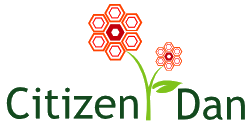| Structured Dynamics has just released new versions of the three main packages that compose the Open Semantic Framework: structWSF, conStruct and the Semantic Components. This is the end result of about 6 months of work that has been sponsored by multiple different projects. |  |
A lot of new features have been added and some web-services/modules/components have been greatly updated. Let’s take a look at the major improvements.
structWSF
The main additions to structWSF are the new Scones, commON converter, and Tracker web service endpoints. Multiple bugs have also been fixed in different other endpoints.
- Download the latest version package here
- Check the changelog here
- Read the code documentation here
- Browse the SVN repository here
Semantic Components
Multiple things happened related to the semantic components. First, the Workbench application, along with the Dashboard and the sStory components, have been released. These are the major new components that have been implemented in the recent MyPeg.ca public Winnipeg City indicators data system that was released last week.
Also, the sRelationBrowser and the sMap components got major enhancements as well.
- Download the latest version of the Workbench here
- Download the latest version of the PortableControlApplication here
- Download the latest version of the Semantic Components Library here
- Download the latest version of the structSearch demo here
- Check the changelog here
- Read the code documentation here
- Browse the SVN repository here
conStruct
The main additions to conStruct were two new modules: structAppend and structScones. structAppend has been created to help people manage the datasets they import in their structWSF instances. You can read more about dataset management strategies using structAppend by reading this tutorial page and this other one. structScones is a user interface to the Scones web service endpoint. It takes unstructured text as input, tags concepts and named entities to that text, and then indexes the result in the structWSF instance. It also manages the creation of the files used by the sStory semantic component.
Finally the structCreate and structUpdate modules have been upgraded and are now using the Instance Records Forms Format. These forms will eventually be generated automatically by the next generation of the ontologies management structWSF web service endpoints.
- Download the latest version package here
- Check the changelog here
- Read the code documentation here
- Browse the CVS repository here
Conclusion
All these new releases, enhancements and bug fixes are the fruits from the great cooperation Structured Dynamics has with its clients. All of these projects have been sponsored by different entities, and each of them has benefitted from what others helped to develop. We have been fortunate to have clients that also share an understanding of open source benefits.
Structured Dynamics’ open source strategy is working well. The end result is a better open source data ingest, management, analysis and publication via the Open Semantic Framework.
We are looking forward to continuing this progress via follow-ons with our current clients. And, of course, we are always looking for new opportunities with new clients.





 Structured Dynamics just released the
Structured Dynamics just released the